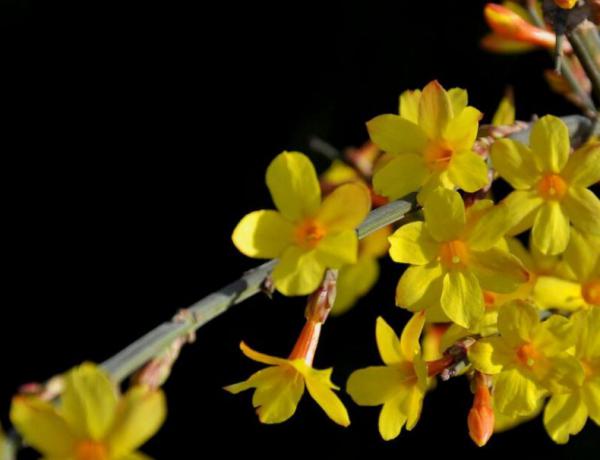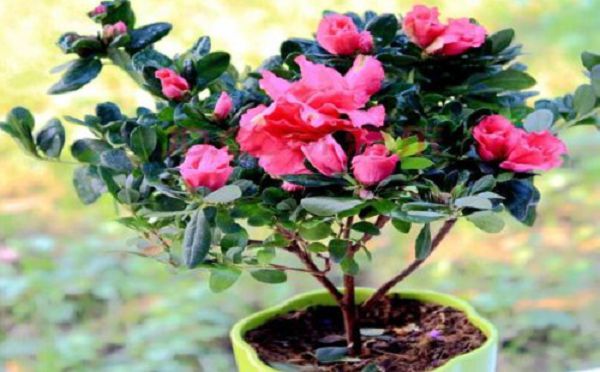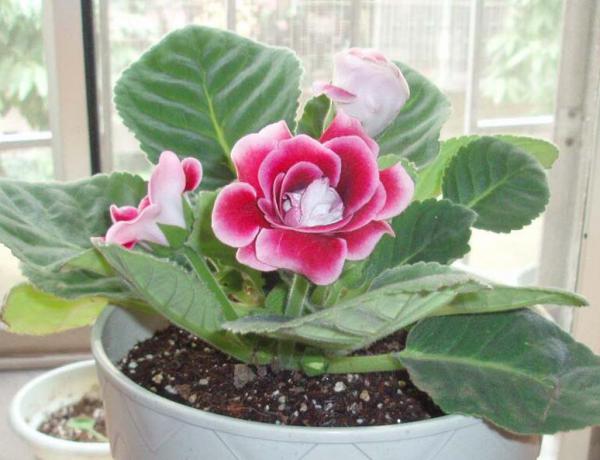What are the cutting techniques of primrose?

Primrose is a common flower with beautiful appearance and easy to grow. However, the number of primrose is a very important factor affecting the normal growth of primrose. On the one hand, primrose belongs to tufted vegetation, if individual planting alone, there are too few plants of primrose, it is very likely to cause primrose to blossom or not to blossom. And fewer primroses grow together, the overall disease prevention ability is poor, the plant is easy to be infected by bacteria, the outbreak of diseases.
On the other hand, if there are too many primroses, the number of flowers will become more, and the nutrients needed will increase accordingly. If there is no adequate nourishment for them, the primroses will grow slowly, grow weak, and the flowers will gradually wither. Under such circumstances, it is very important for external forces to intervene to keep primrose within the range of healthy growth.
There are three main propagation methods of primrose: seed propagation, ramet propagation and tissue culture. All three methods can change the number of primroses. What we focus on today is one of the methods of ramet propagation-cutting. The cutting method is easy to operate, and can reasonably change the number of primroses, which can effectively promote the growth of primroses.
First, what are the points that should be paid attention to in the cutting of primrose?
Before cutting primrose, it is necessary to split the primrose.
① determines whether ramets are needed.
The number range of healthy growth of primrose is 5-6 adult plants and 1-2 seedlings. Within this range, the nutrients supplied for primrose can ensure that its normal growth will not be damaged by lack of fertilizer, and promote the growth of seedlings at the same time. In most cases, the number of primrose plants is not in this range, so it is necessary to split the primrose. In addition, when the demand for primrose is at its peak in the market, we can also split the primrose to promote the reproduction of primrose, get more primrose, and bring more economic benefits for breeders.
② ramet cycle:
The ramet of primrose needs to be carried out carefully. If the number of ramets is too much, it will harm the root of primrose and seriously affect the growth of primrose. Therefore, the interval between the two ramets is usually about 2-3 years, so that the primrose can be protected from harm. No matter how short the time is, it is possible to cause irreversible damage to primroses. For example, if the primrose is given a ramet once a year, the plant has not yet alleviated from the influence of the last ramet, so the next ramet will be carried out, which hinders the normal growth of the primrose plant and increases its chance of being infected by bacteria.
③ ramet time:
In theory, primrose can be divided at any time of the year. However, in order not to hurt the plant as far as possible, not to affect the growth of primrose, the ramet time should also be selected at the most appropriate time. However, from the point of view of optimization, the post-flowering period (from the Spring Equinox to Grain Rain or the Autumn Equinox to the Beginning of Winter) is the most appropriate compared with other times, but there are great differences in the environment in different regions. Therefore, it is not possible to say that the ramet time is at a certain time. To determine the specific time, growers also need to consult data to understand their local temperature, humidity and other conditions, and then make a decision.
A large number of statistics show that the period after the flowering period of primrose is more appropriate than other times. But this is not absolute, and the specific time should be determined according to the description of the previous paragraph.
Second, which steps can be divided into the cutting steps of primrose?
1. Preparatory work:
①, choose the flowerpot:
When choosing flowerpots, we should pay attention to the height and type of flowerpots. The height of the flowerpot should be determined according to the length of the primrose after the cutting branch, which is not longer than the branch, nor less than half of the branch. As for the types of flowerpots, the common choices are plastic pots and purple sand pots. Plastic pots are widely used because of their affordable prices. But in fact, the effect of purple sand basin is much greater than that of plastic basin, which is more suitable for the growth of primrose branches after cutting. Therefore, we suggest that it is better to choose purple sand basin as far as possible if there are conditions.
② flowerpot treatment:
New and old flowerpots will be treated in two different ways. New flowerpots often contain what we call "anger", which is harmful to the growth of plants, not to mention the fragile branches of primroses just transplanted. But soak in clear water, you can quickly remove this "angry", rest assured to use flowerpots. Usually soak the new flowerpot in clean water for 3-4 days.
However, if it is a used flowerpot, there may be a large number of unknown bacteria attached to the flowerpot. In order to prevent the transplanted branches of primrose from being infected by bacteria, the old flowerpot should be disinfected first and then exposed to the sun for about 2-3 days. This can effectively kill bacteria in the flowerpot.
③ fills the flowerpot with plant material:
It is very important to fill the flowerpot with plant materials, which play a role in replenishing water and nutrients in time after the branches of primrose are transplanted to ensure their growth. The specific composition of plant material should be prepared according to different varieties of primrose. Usually, it is a common method to prepare plant material by mixing Goldstone, fairy soil and snake wood at the proportion of 3:4:1, supplemented by granular soil and fiber materials.
Of course, the composition of plant material is not absolute, and the more reasonable composition of plant material is not this kind. Growers can consult the data, play freely, and prepare more effective plant materials to promote the growth of primrose branches.
In addition, if there are conditions, you can also soak the plant in carbendazim solution for about 3-4 hours, and then take it out and put it in a flowerpot to dry. The purpose of this is to disinfect the plants and avoid the branches of primrose from being infected by germs as much as possible.
2. Specific operations:
① stopped watering primrose plants about 2-3 days before ramet. In order to improve the survival rate of primrose cuttings, the branch cuttings with good growth and strong disease resistance on the original plants are generally selected. If the plants are watered normally a few days before cutting, the cells of these branches can not be closely gathered together, which will affect the success rate of cutting to a certain extent. Therefore, in order to avoid too much water after the ramet, we suggest that the grower should stop watering the primrose plant 2-3 days before the ramet.
② pruned and treated the wound. Before cutting, it is necessary to select the branches to be cut in advance and cut them when cutting. Growers usually choose branches that are about 7-9cm and grow well. When pruning, in order to avoid infection by germs, pruning branches must be pruned with pre-sterilized scissors, leaving 3-4 leaves and 1-2 buds per branch. In addition, when pruning, you should be as careful as possible to avoid causing wounds to the surface of the branches. If it really inadvertently causes a wound to the branch, it will cause germs to invade from the wound, thus causing the cuttage to fail. Therefore, when a wound is found in a branch, the wound should be disinfected in time.
Soak in ③ agent. The branches trimmed from the primrose plant for transplanting are very fragile. In order to enhance its resistance, the branches can be soaked in the agent. This can not only improve the disease resistance of branches, but also effectively prevent miscellaneous bacteria infection, thus greatly improving the success rate of cutting. When soaking, generally soak the branches in carbendazim solution for about 1 hour, then take out and dry.
④ transplants the branches. The operation of transplanting needs to be very careful. The branches that have been soaked and dried should be carefully inserted into the flowerpot, and the insertion depth must be controlled within the range of 4-5cm. It is also necessary to adjust the position of the branches properly, which requires the grower to hold the branch in one hand, hold the shovel in the other hand, and cooperate with both hands to move the branch. If it is a slight movement, you can gently pat the flowerpot to achieve the goal. However, the whole transplanting operation requires the grower to pay high attention to avoid cutting failure caused by errors in the transplanting process.
⑤ ensures that the branches are exposed to sunlight and ventilated. The branches that have just been transplanted into the flowerpot are very fragile, so the week after transplanting is the key period for cutting. During this time, it is necessary to ensure that good branches have sufficient moisture and nutrients to get timely light and ventilation. This requires growers to place flowerpots that have transplanted branches in a place with plenty of light and good ventilation. The ambient temperature of this place should also be maintained at around 13-18 ℃, neither too low nor too high. Only in this way can we ensure that the branches can grow healthily after transplanting, rather than die midway and the cuttings fail.
⑥ ensures sufficient moisture in the flowerpot. "Water is the source of life", which must provide sufficient water for the branches after transplanting. There are usually two ways to replenish water, one is to soak the basin, and the other is to spray on the soil. Both methods can fill the soil with water and provide a continuous supply of water to the branches after transplanting. However, when using these two methods for one-time watering, we should pay attention to controlling the amount of water, which can be stopped as soon as water appears at the bottom of the flowerpot. Watering can also be carried out at regular intervals, but each watering amount is smaller than one-time watering, and the growers can control the interval.
Generally speaking, it can be watered immediately after transplanting. However, some people think that the water itself contains germs, and immediate watering will increase the soil moisture of the flowerpot and cause the branches to be infected by germs, so they often choose to water them the next day. In fact, watering immediately after cutting has almost no effect on the plant.
Even if there are bacteria in the water, the branches, plants and flowerpots are sterilized, and the flowerpots have been placed in places with good ventilation and light transmittance, and immediate watering will not lead to high soil moisture for a long time. Therefore, although the branches are watered immediately, there is little chance that the branches will be infected by germs, and the growers can feel free to water them.
⑦ rests and waits. After completing the above series of steps, there are basically no important steps. Next, the grower only needs to ensure that the ambient temperature and humidity of the flowerpot are maintained within a certain range. Watering and replenishment can be carried out once a week, but growers are required to regularly observe and record the growth of branches after transplanting. In this way, the branches can be dealt with in time when the branches are weak or in any bad condition, so as to ensure the success of cutting.
So much for the cutting method of primrose that we are going to introduce today. By introducing the matters needing attention during cutting, the work to be carried out before cutting and the specific steps of cutting, it is believed that the growers have roughly mastered how to cut primroses and can carry out practical operation.
Of course, the above content is based on the summary and accumulation of planting experience, may not be very comprehensive, although it can give you some inspiration, but we still need to make more supplements. Here we hope that growers can come up with better cutting methods according to this article and combined with practice, greatly improve the success rate of primrose cutting, and then come back to supplement our article. Not only bring more economic benefits to themselves, but also make more contributions to the cutting of primrose.
- Prev

What kind of fertilizer is suitable for rhododendron and what fertilizer is the best?
What kind of fertilizer is suitable for rhododendron and what fertilizer is the best?
- Next

Can the bulbs of paulownia be cut and propagated in winter?
Can the bulbs of paulownia be cut and propagated in winter?
Related
- Fuxing push coffee new agricultural production and marketing class: lack of small-scale processing plants
- Jujube rice field leisure farm deep ploughing Yilan for five years to create a space for organic food and play
- Nongyu Farm-A trial of organic papaya for brave women with advanced technology
- Four points for attention in the prevention and control of diseases and insect pests of edible fungi
- How to add nutrient solution to Edible Fungi
- Is there any good way to control edible fungus mites?
- Open Inoculation Technology of Edible Fungi
- Is there any clever way to use fertilizer for edible fungus in winter?
- What agents are used to kill the pathogens of edible fungi in the mushroom shed?
- Rapid drying of Edible Fungi

